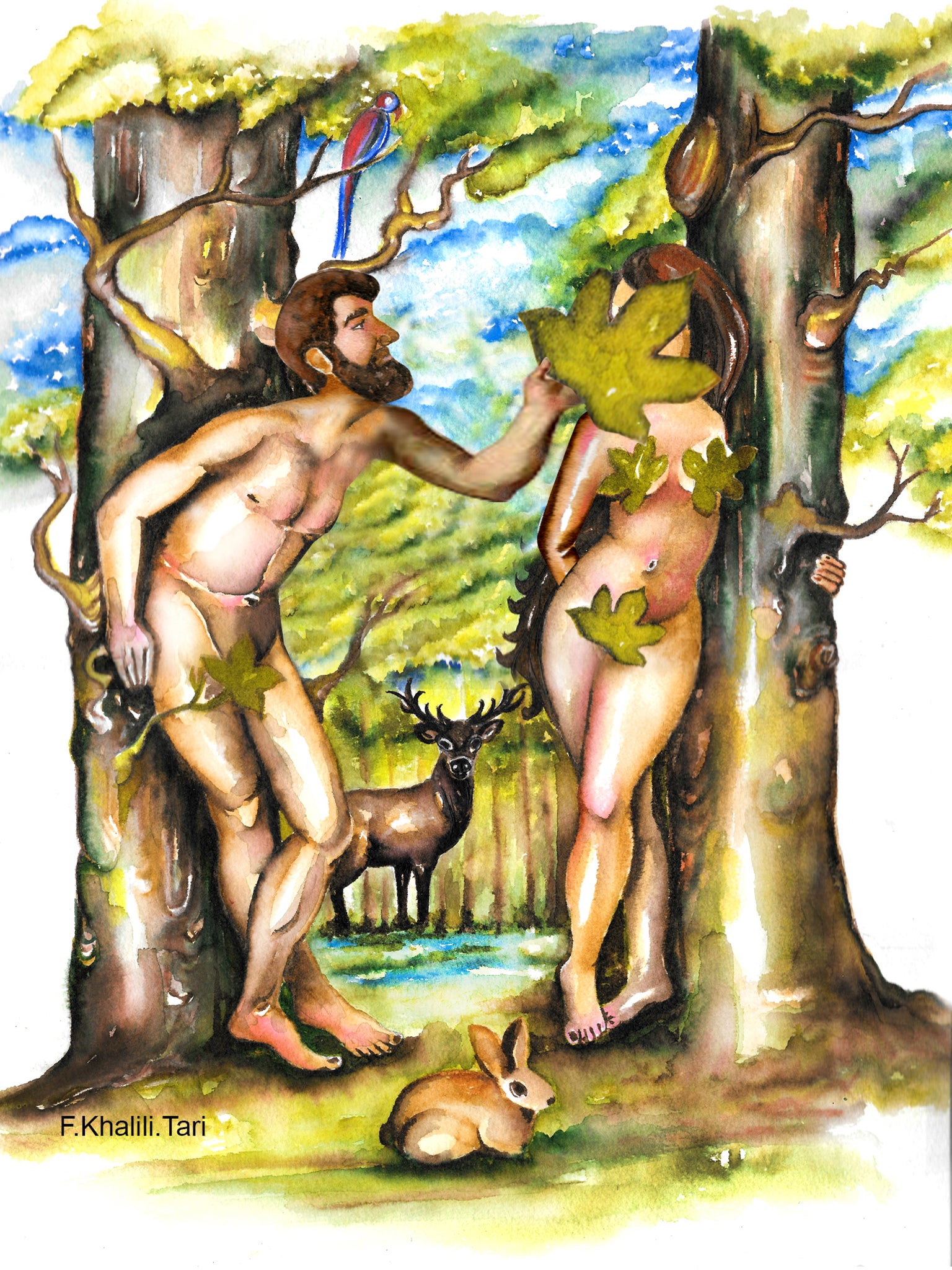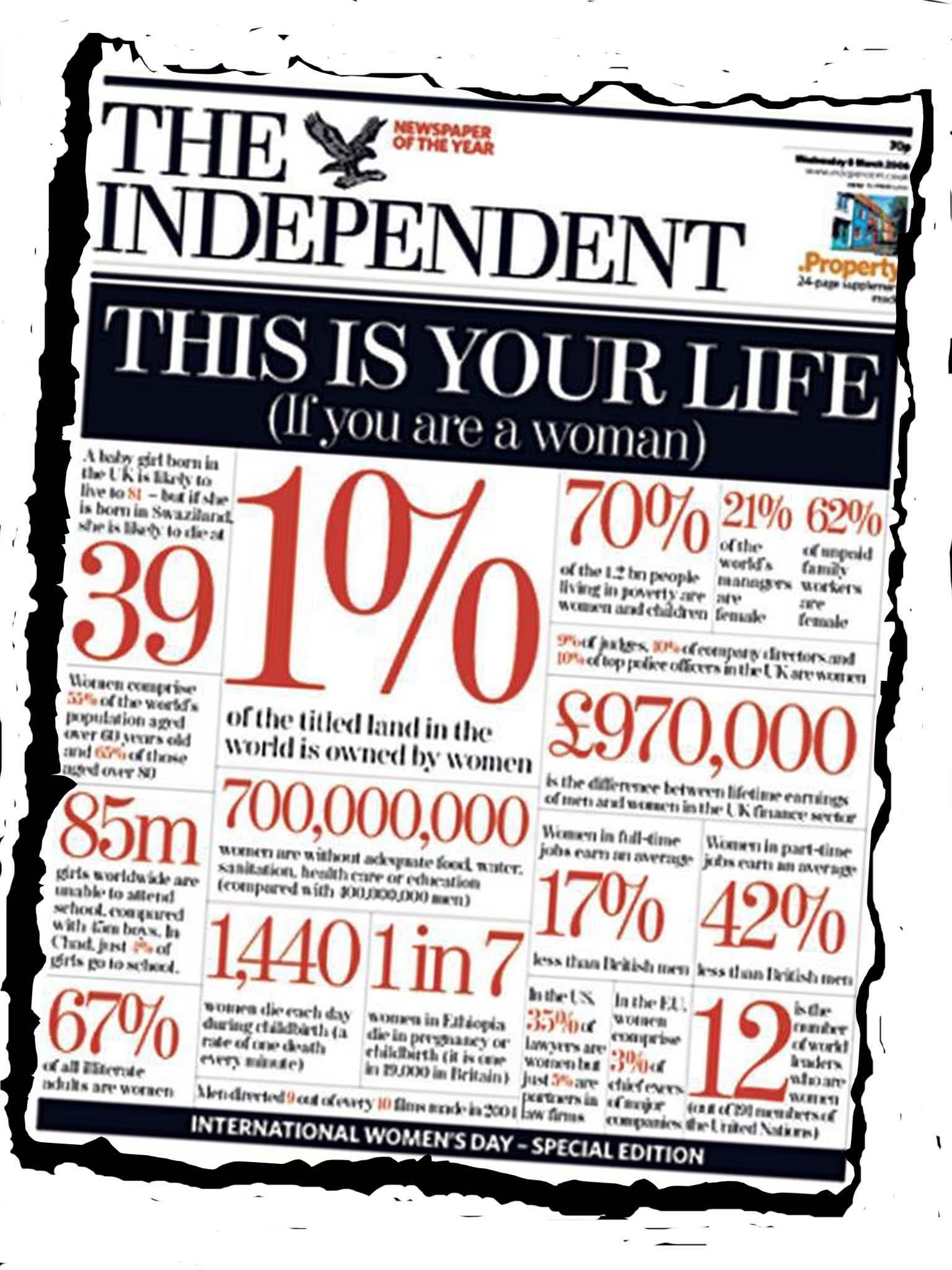Your support helps us to tell the story
From reproductive rights to climate change to Big Tech, The Independent is on the ground when the story is developing. Whether it's investigating the financials of Elon Musk's pro-Trump PAC or producing our latest documentary, 'The A Word', which shines a light on the American women fighting for reproductive rights, we know how important it is to parse out the facts from the messaging.
At such a critical moment in US history, we need reporters on the ground. Your donation allows us to keep sending journalists to speak to both sides of the story.
The Independent is trusted by Americans across the entire political spectrum. And unlike many other quality news outlets, we choose not to lock Americans out of our reporting and analysis with paywalls. We believe quality journalism should be available to everyone, paid for by those who can afford it.
Your support makes all the difference.Twelve years ago, to mark International Women’s Day, The Independent ran a memorable front page which examined statistical realities for women around the world. More than a decade on, much has changed around the globe.
Nevertheless, after a year dominated by revelations about the abuse of women by men in Hollywood, Westminster, the media and elsewhere, it is plain that gender equality remains a considerable way off – even in advanced Western democracies.
For women in many developing countries, the battle against persecution based simply on their sex is fought unevenly to say the least. In places affected by war, women are frequently subjected to systematic sexual violence. In rural communities especially, traditions too often place women in subservient positions and there is frequently inadequate health and education provision.

When it comes to earning a living, women are still widely discriminated against. Globally, men still take home – by some estimates – 75 per cent more in wages than women, on average. The UK is, on the plus side, a little ahead of the curve, with a 9 per cent differential – but it is hardly insignificant.
More positively, the proportion of female judges in Britain has increased since 2006. Now, nearly a quarter of appeal judges are women. We finally have another female Prime Minister, too. Life expectancy has risen for many women, including in less developed countries. Back in 2006, a woman living in Swaziland would be lucky to reach the age of 40. Today, she can expect on average to live to 61.
Today is a moment to take stock, to welcome advances that have been made and to reflect on the hard truth that the mountain to true equality between the sexes is still only half-climbed. There can be no resting on laurels.

This is your life in 2018 – if you are a woman
- A girl born in the UK is likely on average to live to 83 – but if she is born in Swaziland she is likely to die at 61
- In the UK men earn on average 9 per cent more than women
- If the gender pay gap were to be closed today, women would on average receive a £6,300 annual wage increase (equivalent to £90bn collectively in the UK)
- $10 trillion: the estimated value of unpaid work performed by women every year across the world – twice as much as men do
- 16 per cent of people on FTSE 350 executive committees are women
- Less than 13 per cent of agricultural landholders around the world are women
- Women make up 64 per cent of the world’s illiterate population
- 60 per cent of all undernourished people are women and girls
- The top 3 movies at the US box office in 2017 had female leads for the first time in nearly 60 years – yet women made up just 18 per cent of all directors, writers, producers, editors and cinematographers on the year’s top 250 films
- 24 per cent of Court of Appeal judges are women
- 23 per cent of the world’s politicians are women
- 8,000 girls a year are expelled or drop out of school in Tanzania due to pregnancy
- Women in Britain spend, on average, more than £18,000 on their periods over a lifetime
- In sub-Saharan Africa, around 10 per cent of girls miss school during their menstrual cycles
- Approximately 830 women die from preventable causes related to pregnancy and childbirth globally each day
- More than 137,700 girls in the UK have missed school in the last year because they couldn’t afford sanitary products

Join our commenting forum
Join thought-provoking conversations, follow other Independent readers and see their replies
Comments